When it comes to hiking, staying hydrated is one of the most crucial factors in maintaining energy, endurance, and generally feeling good along the trail. But there’s more to hydration than simply drinking water. In fact, water alone can sometimes be counterproductive, particularly when you’re exerting yourself on a long and challenging hike.
Hydration is about balance—especially with electrolytes. Electrolytes (like sodium, potassium, calcium, and magnesium) are essential minerals that help regulate fluid balance, nerve function, and muscle contractions. When we sweat, we lose both water and electrolytes. Simply drinking water may not replenish lost electrolytes, which is why balancing hydration with proper electrolyte intake is key, especially during intense exercise or in hot weather.
Replenishing electrolytes can take anywhere from 30 minutes to a few hours, depending on factors like exercise intensity, sweat rate, and environmental conditions (Cheuvront & Kenefick, 2011). Consuming electrolyte-rich drinks, salty snacks, or potassium-rich foods like bananas or oranges can speed up the recovery process. For longer activities, it’s best to begin replacing electrolytes during the hike to avoid deficiencies. Drinking plain water without electrolytes may dilute these minerals, slowing recovery, so combining water with electrolytes is crucial for hydration and optimal performance (Sawka et al., 2007).
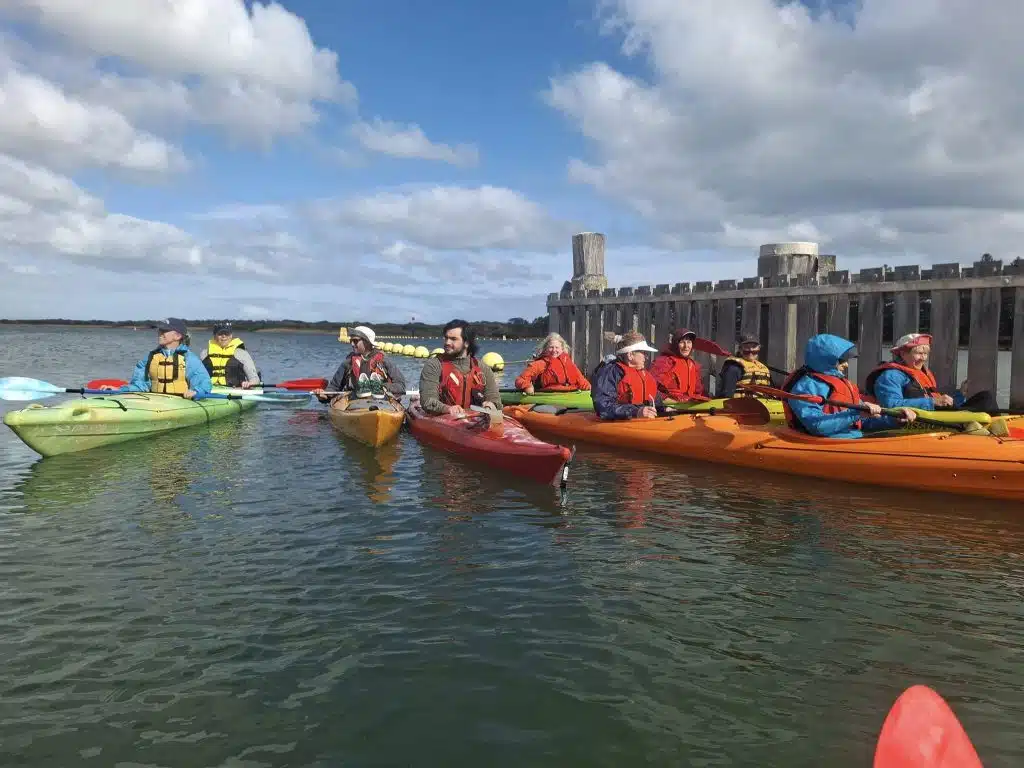
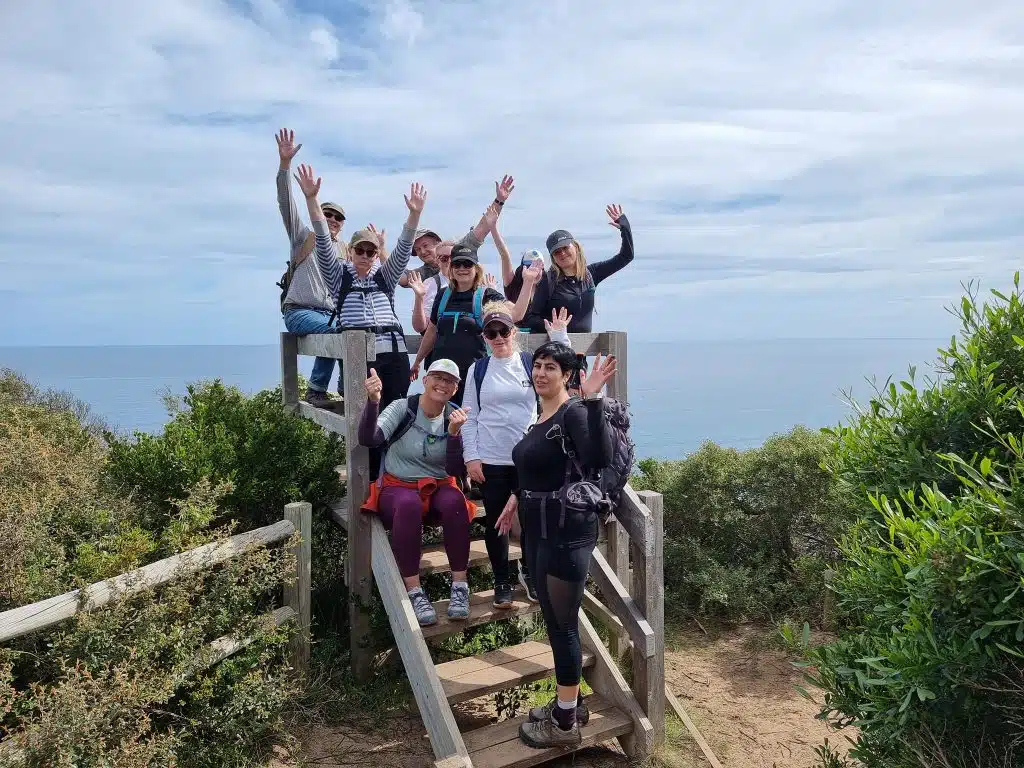
Can you drink too much water?
Yes, you can! Interestingly, overhydration can be just as dangerous as dehydration. Endurance athletes and hikers sometimes experience a condition called hyponatremia, where excessive water intake dilutes the body’s sodium levels, leading to serious health issues. This has even been linked to heart attacks in marathoners who overhydrate (Hew-Butler et al., 2015). Research shows that athletes often experience sluggishness or hit a “wall” when their electrolyte balance is off. This is why hydration strategies for challenging hikes, like the Kokoda Track, or marathon events emphasise using electrolyte drinks. Electrolytes help your body retain the water you drink, rather than just flushing it out.
It’s not just about physical activity either. Even in everyday life, especially for those who follow clean eating with reduced salt and sugar, overhydration can dilute electrolytes and cause fatigue, headaches, and irritability. Additionally, it can cause lightheadedness and low blood pressure (Rosner, Kirven, & others, 2007). This becomes even more pronounced during stressful periods or life stages like menopause, where hormones are already disrupted. So while the age-old advice to drink water is somewhat true, it’s essential to balance it with electrolytes—but always check with your doctor!
Sugar’s role in hydration
Surprisingly, a little sugar can help you hydrate more effectively. Sugar aids in the absorption of electrolytes in the intestines, helping retain water in your system (Shirreffs, S, M, 2009). This is why sports drinks and oral rehydration solutions contain a small amount of sugar—they maximise water retention in the body. However, you don’t need to rely on sugary commercial products like Gatorade. Simple alternatives, such as a few lollies, a piece of fruit, or a homemade mix of water with a pinch of salt and sugar can be just as effective.
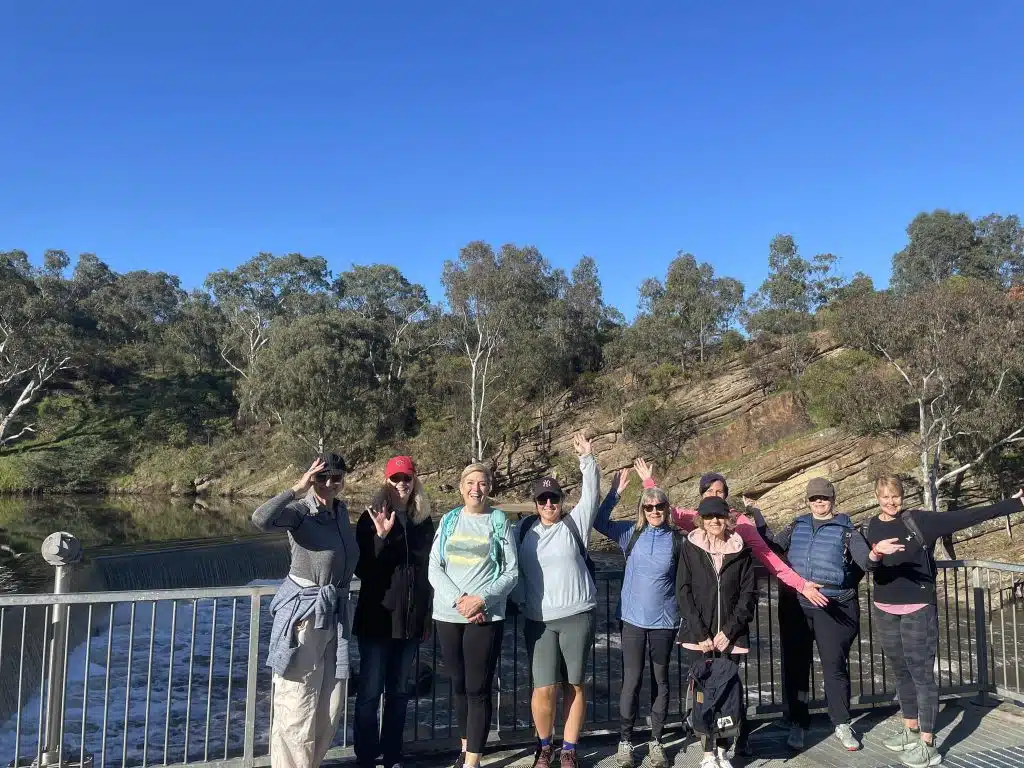
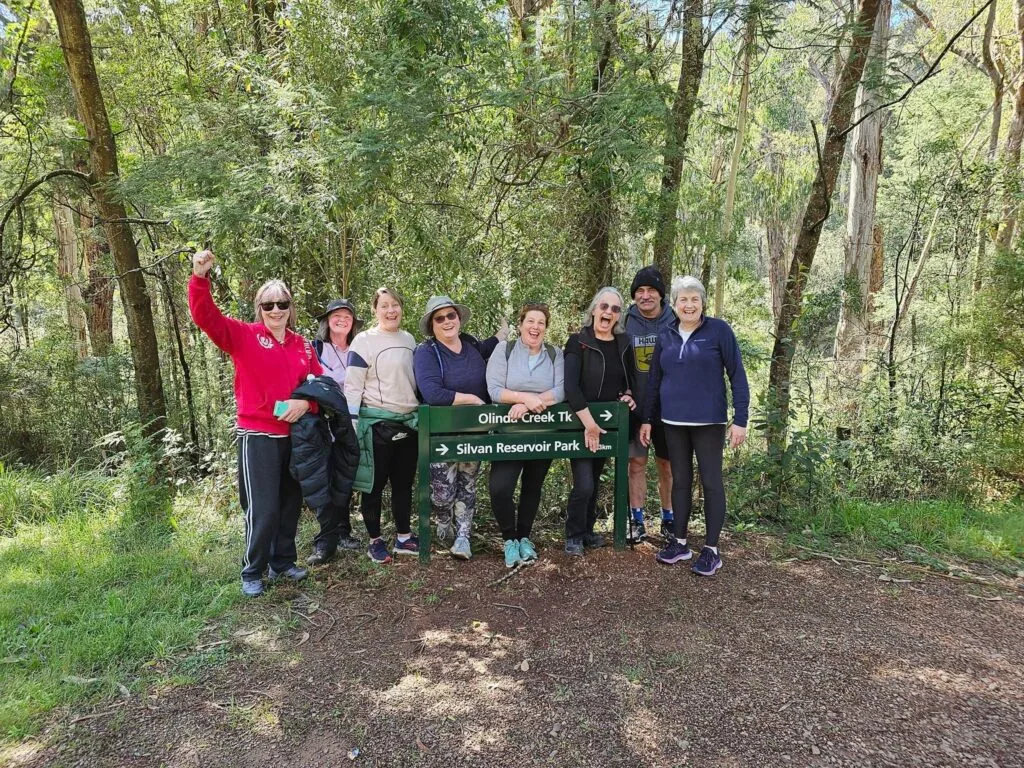
How much water do you need?
The old recommendation of 6-8 glasses of water per day is based on no solid science (Valtin, 2002). How much water you actually need depends on factors like the intensity of your hike, the weather conditions, and your own body. Drinking small amounts of water regularly, instead of gulping down large quantities at once, is the most effective way to stay hydrated on the trail. Using a water bladder allows for consistent sipping as you walk, which is more beneficial than stopping to drink from a bottle. For hikes lasting several hours or more, it’s important to drink water with added electrolytes to replace what you lose through sweat. Foods like oranges, watermelon, and cucumber can also contribute to your hydration, as they contain both water and electrolytes (Maughan & Shirreffs, 2010).
Spot the difference between dehydration and overhydration
The symptoms of dehydration and overhydration can often feel the same—fatigue, headaches, muscle cramps, and irritability. Signs of dehydration include dry mouth, dark urine, and dizziness, while overhydration, or hyponatremia, can cause nausea, bloating, and confusion (Hew-Butler et al., 2015). Women, particularly during life stages like menopause, may be more sensitive to changes in hydration and electrolyte levels, which can worsen symptoms like fatigue, headaches, and mood swings.
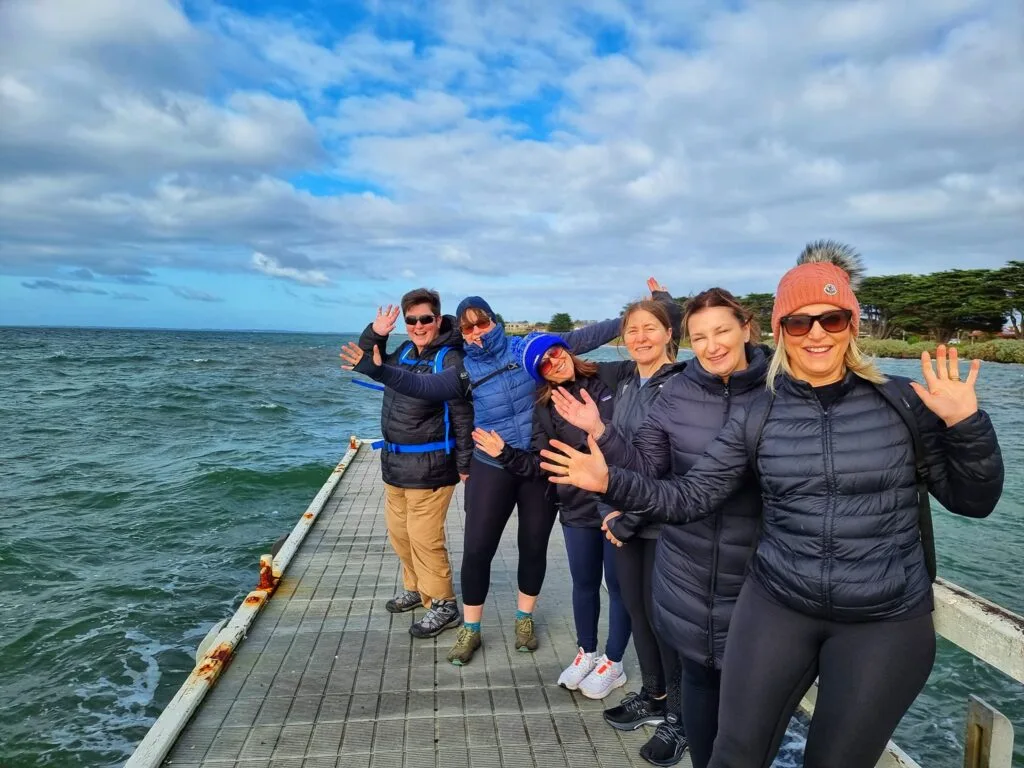
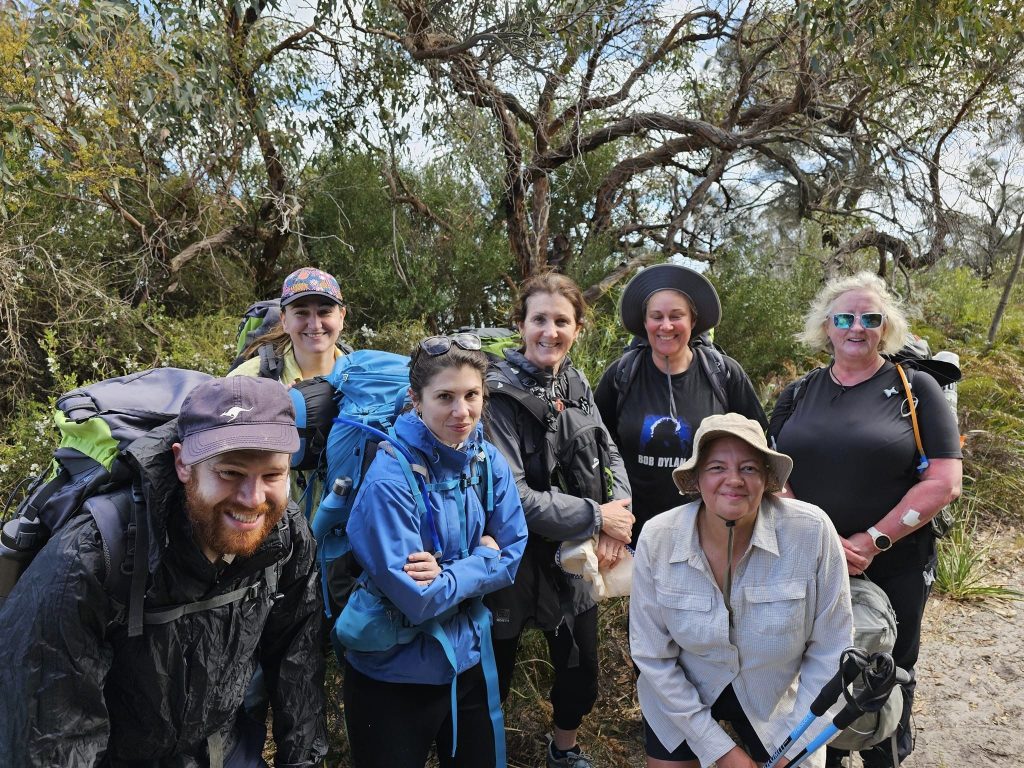
Simple hiking hydration tips
Listen to your body: If you feel tired, sluggish, or headachy, your hydration balance may be off. Adjust your water and electrolyte intake accordingly.
Sip often: Use a water bladder or small bottle to take frequent sips rather than large, infrequent gulps. This keeps your hydration levels steady throughout the hike.
Electrolyte boost: For longer hikes, add electrolyte tablets or a pinch of salt to your water. Bring fruits like oranges, which naturally contain water and electrolytes.
Eat water-rich foods: Include fruits and veggies high in water content, like oranges, cucumber, and grapes. These foods will help keep you hydrated while providing vitamins and minerals.
Avoid over-hydrating: Don’t overcompensate by drinking too much water without balancing it with electrolytes. Overhydration can be just as dangerous as dehydration.
Dilute sugary sports drinks: Dilute Gatorade or Powerade to reduce the sugar content in sports drinks, or eat your hydration in the form of fruit.
Hydration is all about balance—not just drinking more water. To stay hydrated on the trail, especially during long or strenuous hikes, you need to replenish both water and electrolytes. Don’t be fooled into thinking more water is always better. Without electrolytes, too much water can make things worse. By paying attention to how your body feels, sipping regularly, and including water-rich foods and electrolytes in your hydration plan, you’ll be able to hike longer, feel better, and truly enjoy the adventure.
Find an adventure to practise your hydration on HERE
References:
- Cheuvront, S. N., & Kenefick, R. W. (2011). Dehydration: Physiology, assessment, and performance effects. Comprehensive Physiology, 4(1), 257-285.
- Hew-Butler, T., Rosner, M. H., & Fowkes-Godek, S. (2015). Statement of the Third International Exercise-Associated Hyponatremia Consensus Development Conference. Clinical Journal of Sport Medicine, 25(4), 303-320.
- Shirreffs, S. M. (2009). Hydration in sport and exercise: water, sports drinks and other drinks. Nutrition bulletin, 34(4), 374-379..
- Maughan, R. J., & Shirreffs, S. M. (2010). Hydration and performance during prolonged exercise. International Journal of Sports Nutrition and Exercise Metabolism, 10(3), 331-344.
- Rosner, M. H., Kirven, J., & others. (2007). Exercise-associated hyponatremia. Clinical Journal of the American Society of Nephrology, 2(1), 151-161.
- Sawka, M. N., Burke, L. M., & Eichner, E. R. (2007). Exercise and fluid replacement. Medicine and Science in Sports and Exercise, 39(2), 377-390.
- Valtin, H. (2002). “Drink at least eight glasses of water a day.” Really? Is there scientific evidence for “8 x 8”? American Journal of Physiology-Regulatory, Integrative and Comparative Physiology, 283(5), R993-R1004.




